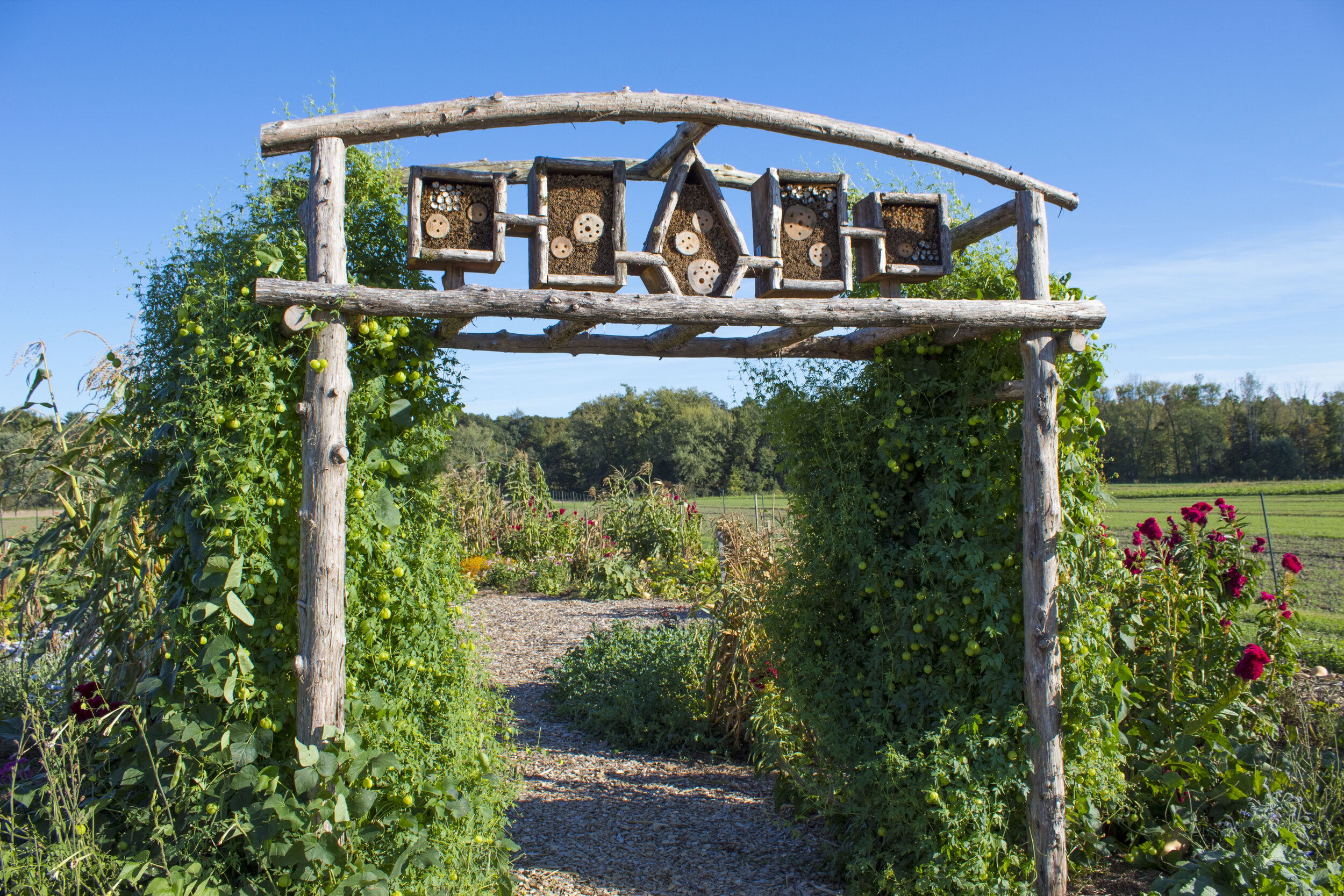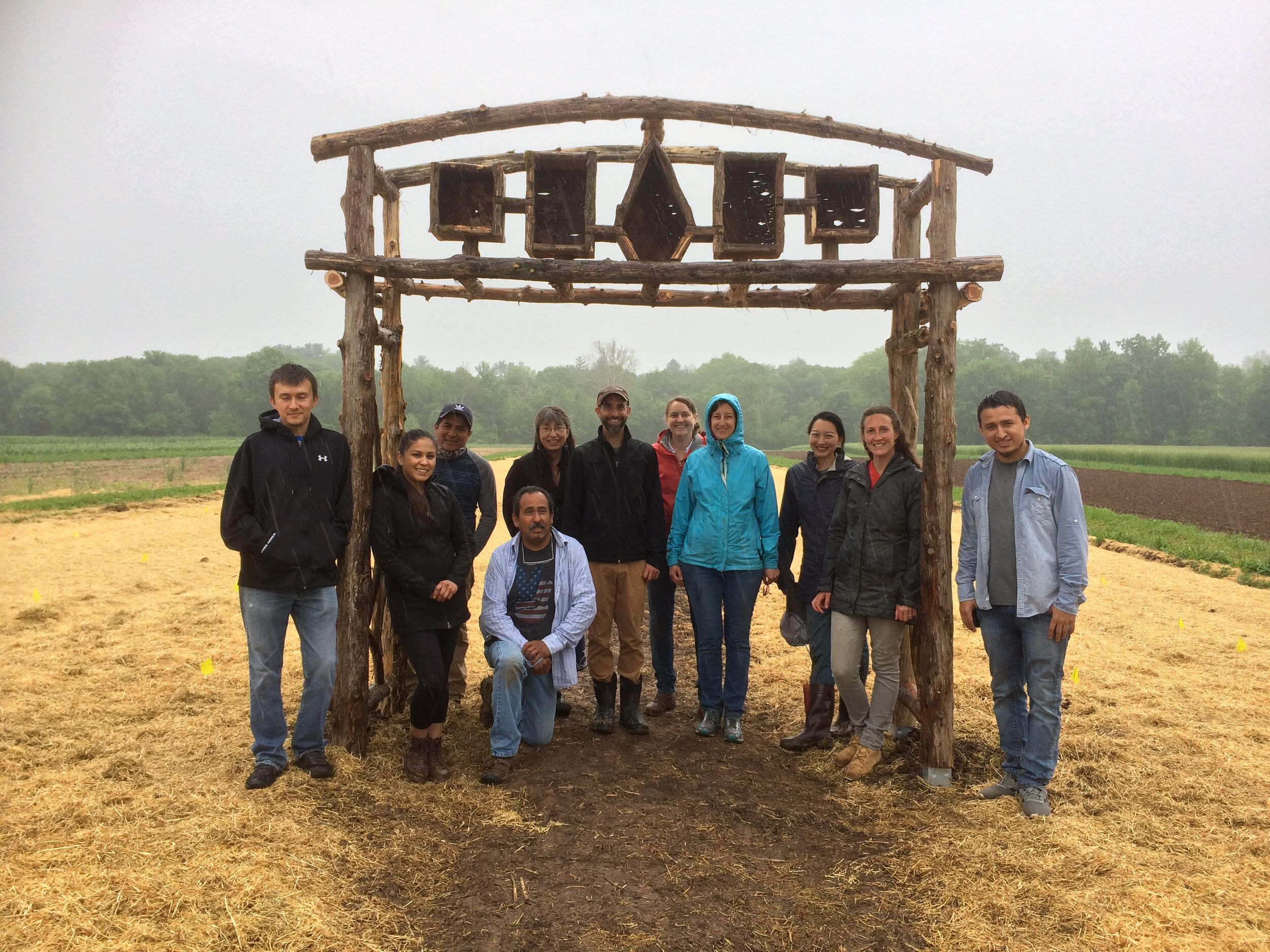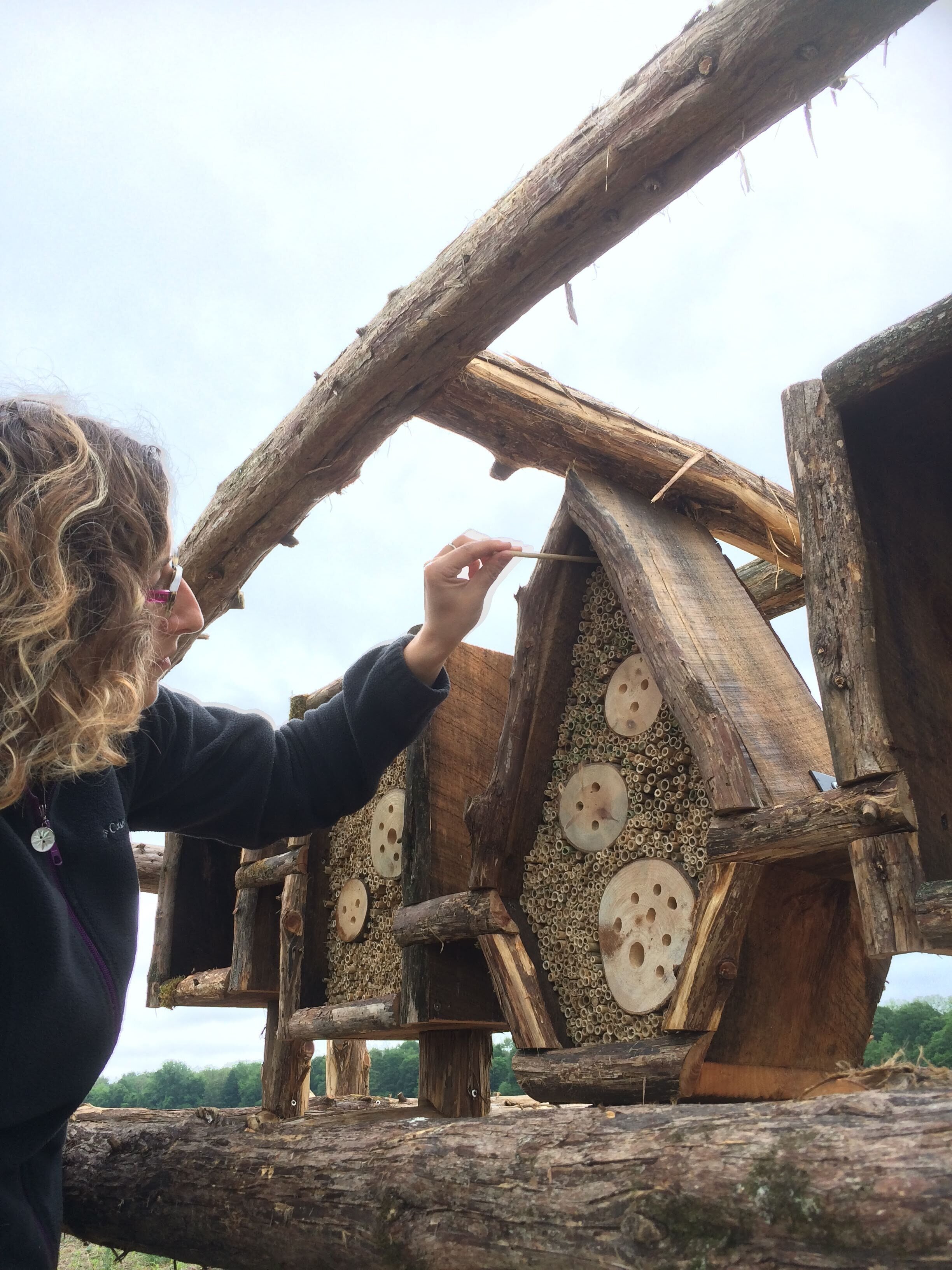Bee Habitat Arbor Entrance for the Native American Seed Sanctuary
Endangered seeds are being grown and protected at the Native American Seed Sanctuary through a collaboration of Akwesasne Leaders, Seedshed, Indigenous Seed Keepers Network and the Hudson Valley Farm Hub. Hudson Valley Bee Habitat was invited to create an arbor that is a threshold into the Three Sisters Garden at the Native American Seed Sanctuary. Akwesasne Leader, Mary Arquette, inspired the arbor's bee habitat design, which takes the form of the Hiawatha Belt. The Hiawatha Belt represents the five nations of the Haudenosaunee Confederacy living peacefully together. Solitary bees nest in the locally harvested phragmites stems, Onondaga sunflower stalks, and logs in the Hiawatha Belt form. We see the diversity of bees, such as leaf-cutter, mason, and sweat bees, thriving together in the arbor as beautifully congruous with the symbolism of the Hiawatha Belt. As one passes beneath the Hiawatha Belt bee habitats into the Sanctuary, we hope one enjoys a moment of pause and reflection upon the land and our interconnection with the soil, air, water, sunlight, species, and community that sustains us.
Solitary Bee Habitats for your home.
We are designing bee habitats for solitary bees to have a safe, clean, dry place to lay their eggs and for humans to have a beautiful, sustainable, and easy way to help bees thrive in their yards and gardens. Our habitat designs are inspired by a different type of pollinator plant blossoms. After field testing of our prototypes, we plan to offer the habitats for sale to support our educational mission and pollinator programming. Please sign-up on our mailing list to get the lastest updates.
What is a solitary bee? Most people know that honeybees live in large colonies and are ruled by a queen. Honeybees only make up 10% of the bee population, while solitary bees, such a mason, leafcutter, carpenter, and sweat bees make up the other 90%. Solitary bees, unlike honeybees and bumblebees, do not have a queen nor live in large colonies. The female lays her eggs in individual tubes in reeds, wood, or the ground. They are non-territorial and docile as they do not have a large colony or queen to protect. Solitary bees are all around us, too busy about their work to bother with humans, which makes them ideal bees for your backyard and public spaces.
Large Scale Bee Habitats
We collaborate with communities to co-create bee habitat sculptures. We have co-created sculptures that support pollinators with habitat and forage with the Nomad9 MFA program , the City of Kingston’s Beautifying and Restoring Kingston Teen crew at the Y Farm Project.





